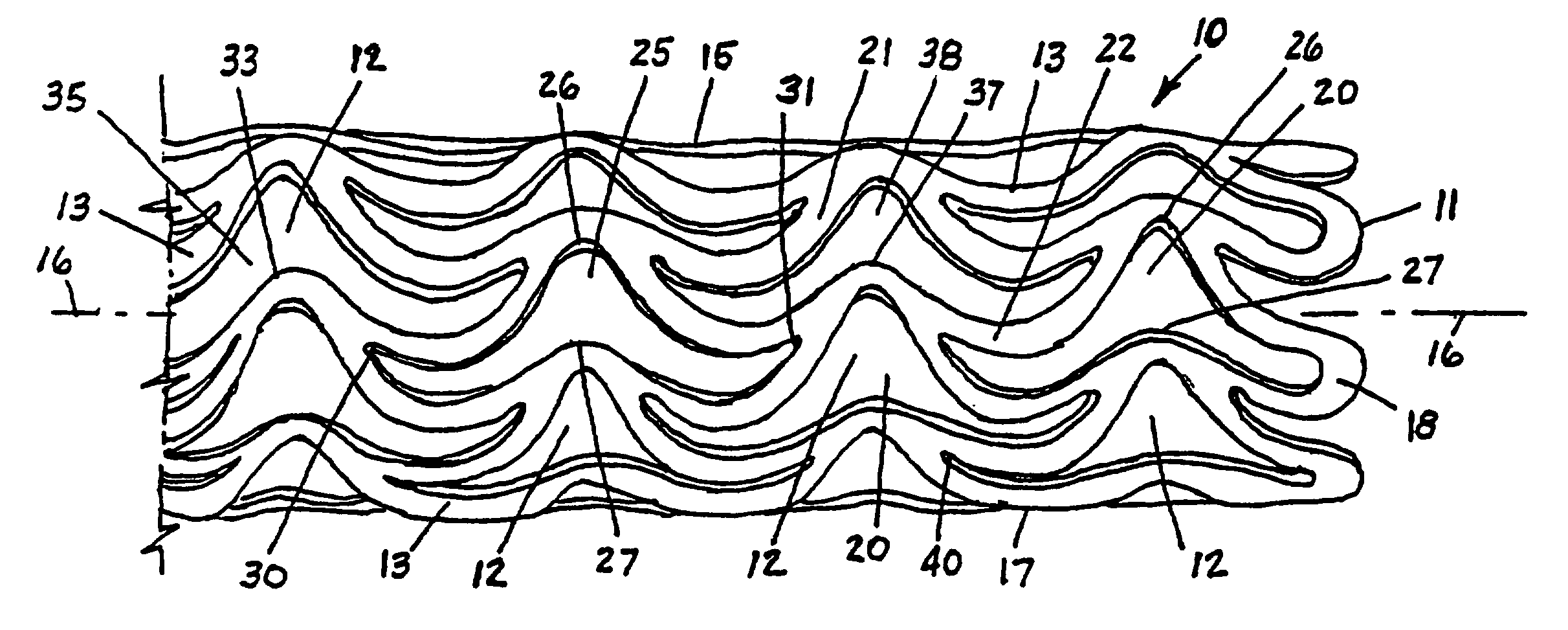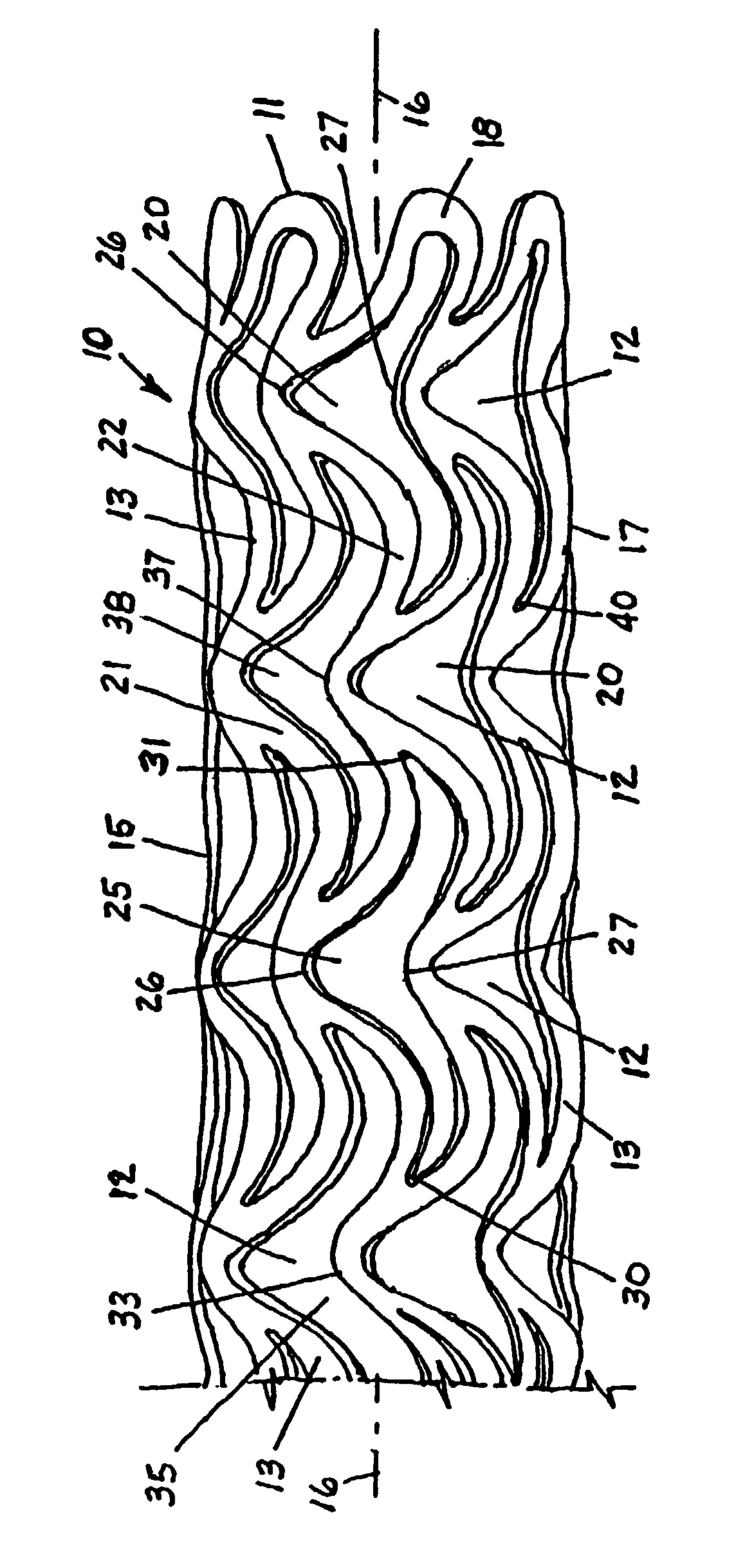Primarily niobium stent
a niobium stent and stent technology, applied in the field of stents, can solve the problems of acute blockage, new blockage of the treated vessel, tissue irritation can exacerbate restenosis, etc., and achieve the effect of improving structural performance, avoiding brittleness and thrombogenicity
- Summary
- Abstract
- Description
- Claims
- Application Information
AI Technical Summary
Benefits of technology
Problems solved by technology
Method used
Image
Examples
Embodiment Construction
[0023]The sole FIGURE is a perspective view (not to scale) of a stent 10 in the form of a hollow tubular self-supporting structure composed primarily of niobium (Nb), with a trace amount of zirconium (Zr), titanium (Ti) or tantalum (Ta) for example, preferably zirconium, the trace amount preferably less than 5%, more preferably approximately 1%, and remainder niobium. The added trace metal improves physical characteristics of the stent for its intended function. Typically, the stent material used by applicant also has negligible amounts of tantalum (Ta, about 180 micrograms per gram (μg / g)), iron (Fe, <20 μg / g), silicon (Si, about <μg / g), tungsten (W, <20 μg / g), nickel (Ni, <20 μg / g), molybdenum (Mo, <20 μg / g), hafnium (Hf, <20 μg / g), carbon (C, about 7 μg / g), and nitrogen (N, about 53 μg / g), as well as amounts of hydrogen (H) and oxygen (O) primarily introduced during the processing.
[0024]Important values of these minor elemental constituents are those of O2 and H2. Both of these e...
PUM
| Property | Measurement | Unit |
|---|---|---|
| thicknesses | aaaaa | aaaaa |
| diameter | aaaaa | aaaaa |
| thickness | aaaaa | aaaaa |
Abstract
Description
Claims
Application Information
 Login to View More
Login to View More - R&D
- Intellectual Property
- Life Sciences
- Materials
- Tech Scout
- Unparalleled Data Quality
- Higher Quality Content
- 60% Fewer Hallucinations
Browse by: Latest US Patents, China's latest patents, Technical Efficacy Thesaurus, Application Domain, Technology Topic, Popular Technical Reports.
© 2025 PatSnap. All rights reserved.Legal|Privacy policy|Modern Slavery Act Transparency Statement|Sitemap|About US| Contact US: help@patsnap.com


